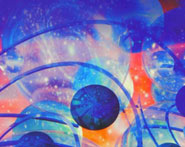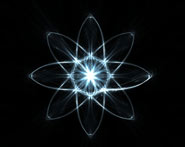


 الفيزياء الكلاسيكية
الفيزياء الكلاسيكية
 الكهربائية والمغناطيسية
الكهربائية والمغناطيسية
 علم البصريات
علم البصريات
 الفيزياء الحديثة
الفيزياء الحديثة
 النظرية النسبية
النظرية النسبية
 الفيزياء النووية
الفيزياء النووية
 فيزياء الحالة الصلبة
فيزياء الحالة الصلبة
 الليزر
الليزر
 علم الفلك
علم الفلك
 المجموعة الشمسية
المجموعة الشمسية
 الطاقة البديلة
الطاقة البديلة
 الفيزياء والعلوم الأخرى
الفيزياء والعلوم الأخرى
 مواضيع عامة في الفيزياء
مواضيع عامة في الفيزياء|
Read More
Date: 24-2-2016
Date: 3-9-2020
Date: 24-2-2016
|
Digital photography
The advent of two-dimensional solid state detectors has revolutionized ‘photography’. The use of digital cameras for everyday use is now fairly common. Such equipment used for landscapes and portraits automatically provides colour pictures. Some of the latest models (SLR) have detachable lenses and could, in principle, be attached at the focus of a telescope without the camera lens being attached. However, there is no facility to make long exposures and, without cooling, the recorded pictures would be very subject to thermal noise. The formatting of the files is also generally not amenable to obtaining numerical information on brightness values. A ‘landscape’ digital camera could be used in a situation where the light level is sufficient as perhaps in the recording of solar spectra using the fibre optic spectrometer described earlier.
Digital cameras can, however, be applied to photography of the Moon and bright planets. In order to obtain images of planetary disks with a reasonable size, the method of eyepiece projection might be investigated. If the camera lens is detachable, with the detector face replacing the paper on the projection board. (It is not advisable to experiment with solar images as damage to the camera might ensue.)
In the first place, the size of the planetary image in the focal plane in the telescope should be calculated—the angular semi-diameter of the planet is tabulated in the AA and the focal length of the telescope should be known). This can be compared with the physical dimensions of the camera detector chip to estimate the size of the basic image relative to the picture format. According to the desired magnification, M, the projection distance, P, to the chip from the eyepiece is given by
P = (M + 1)Fe
where Fe is the focal length of the eyepiece.
If the camera lens is not detachable, then magnified images can also be obtained by using an eyepiece with the camera attached immediately behind. The eyepiece position needs to be set for normal viewing and the camera focused at infinity. Because the field of view is small making it difficult to home in on the desired object, the observations might be eased by placing a flip mirror and viewing system between the eyepiece and the camera. Because of seeing effects, not all of the images will be perfectly sharp. If a large number of identical exposures is made, then they might be subjectively graded according to their sharpness. A probability distribution of image quality can then be obtained. If an ‘astronomical’ CCD camera is available, then a whole range of observational schemes can be attempted. These cameras are normally available simply with a tube for attachment to a telescope and do not themselves carry any foreoptics. They also have built-in cooling so allowing long exposures to be made when attached to a telescope. Their operation requires a PC for their control with supplied software. The recorded images are stored in files with some standard format giving access for quantitative reductions or image processing. Investigation of their application is left to the student. Further ideas for experiments and exercises can be found in some of the sources given in the bibliography.



|
|
|
|
حمية العقل.. نظام صحي لإطالة شباب دماغك
|
|
|
|
|
|
|
إيرباص تكشف عن نموذج تجريبي من نصف طائرة ونصف هليكوبتر
|
|
|
|
|
|
ستوفر فحوصات تشخيصية لم تكن متوفرة سابقا... تعرف على مميزات أجهزة المختبر في مستشفى الثقلين لعلاج الاورام في البصرة
|
|
|
|
بالصور: تزامنا مع ذكرى ولادة الإمام الرضا (ع).. لوحات مطرزة تزين الصحن الحسيني الشريف
|
|
|
|
بالفيديو: الاكبر في العراق.. العتبة الحسينية تنجز المرحلة الأولى من مدينة الثقلين لإسكان الفقراء في البصرة
|
|
|
|
ضمنها مقام التل الزينبي والمضيف.. العتبة الحسينية تعلن عن افتتاحها ثلاثة أجزاء من مشروع صحن العقيلة زينب (ع) خلال الفترة المقبلة
|